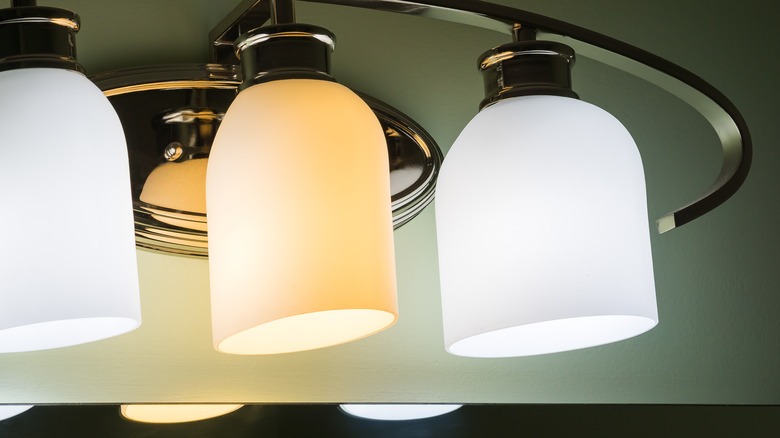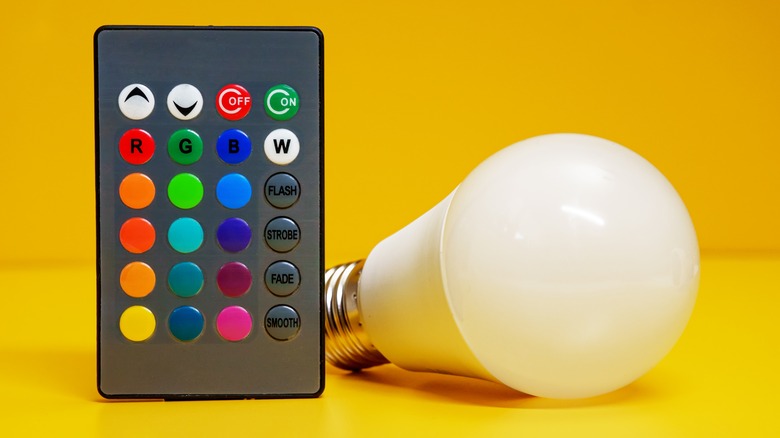Soft White Vs. Daylight Bulbs: What's The Difference?
Buying a light bulb these days feels more like curating a vibe, and the key to that vibe is its color temperature — which is measured on the Kelvin (K) scale. While things often come down to personal preference, there are still scientific reasons for picking one over the other, depending on whether you're creating a space for chilling out or a zone for getting stuff done.
Soft white bulbs are the cozier option, giving off a warm and yellowish glow reminiscent of lighting in the past. They typically land in the 2,700K to 3,000K range on the Kelvin scale. Their warm glow is perfect for spaces where you want to unwind, like living rooms and bedrooms. Aesthetically, they're also a fantastic match for rooms with earthy color palettes and natural wood finishes. Their characteristics are also friendlier to your body's internal clock, since they help stimulate melatonin, the hormone that cues sleep.
On the other end of the spectrum are daylight bulbs. They're engineered to imitate the crisp, natural light of the sun. They do this by operating at a much higher Kelvin rating, typically between 5,000K and 6,500K. The result is an intense, cool light that provides superior visibility for detailed tasks. This clarity makes them a perfect fit for the functional areas in your home where you need to see exactly what you're doing, like the kitchen, home office, bathroom vanity, or basement. The crisp light also does a great job of maximizing the contrast between colors, which is a great feature for anyone working on projects or applying makeup. This brightness is also known to boost alertness and productivity during the day. The trade-off is that the same light can make spaces feel sterile and uninviting.
The rules aren't set in stone
Ultimately, there are no unbreakable rules for lighting your home. Your choice is a matter of personal preference and sometimes even cultural background. For instance, people living in warmer countries often lean towards whiter light. There are no energy benefits for picking one over the other, either. That's because for modern bulbs, the color temperature is separate from the energy draw. It's why you can have two different LED bulbs that both produce equal lumens of brightness and have the same wattage. But one can be a 2700K soft white and the other a 5000K daylight. Energy savings have more to do with the type and brand of the bulb.
One smart approach is to mix and match. You can create a perfectly balanced space by using different color temperatures for different functions within the same room. A kitchen might have bright, cool lights over the countertops for food prep while using warmer tones above the dining area. Similarly, you could use a daylight bulb over your bathroom mirror for your morning routine and have a separate soft white light near the bathtub for a relaxing soak. You can even get the best of both worlds by opting for a more neutral bulb at around 4,000K.
If you want to bypass the commitment, smart bulbs are a great hack. They let you change a bulb's color temperature whenever you want, meaning a single lamp can serve multiple purposes. You could set it to a crisp daylight color when you need to read. Or you could shift it to a warm, cozy white when you're ready to wind down for the night. Color-changing smart lights expand this flexibility even further, letting you experiment beyond the usual options.

